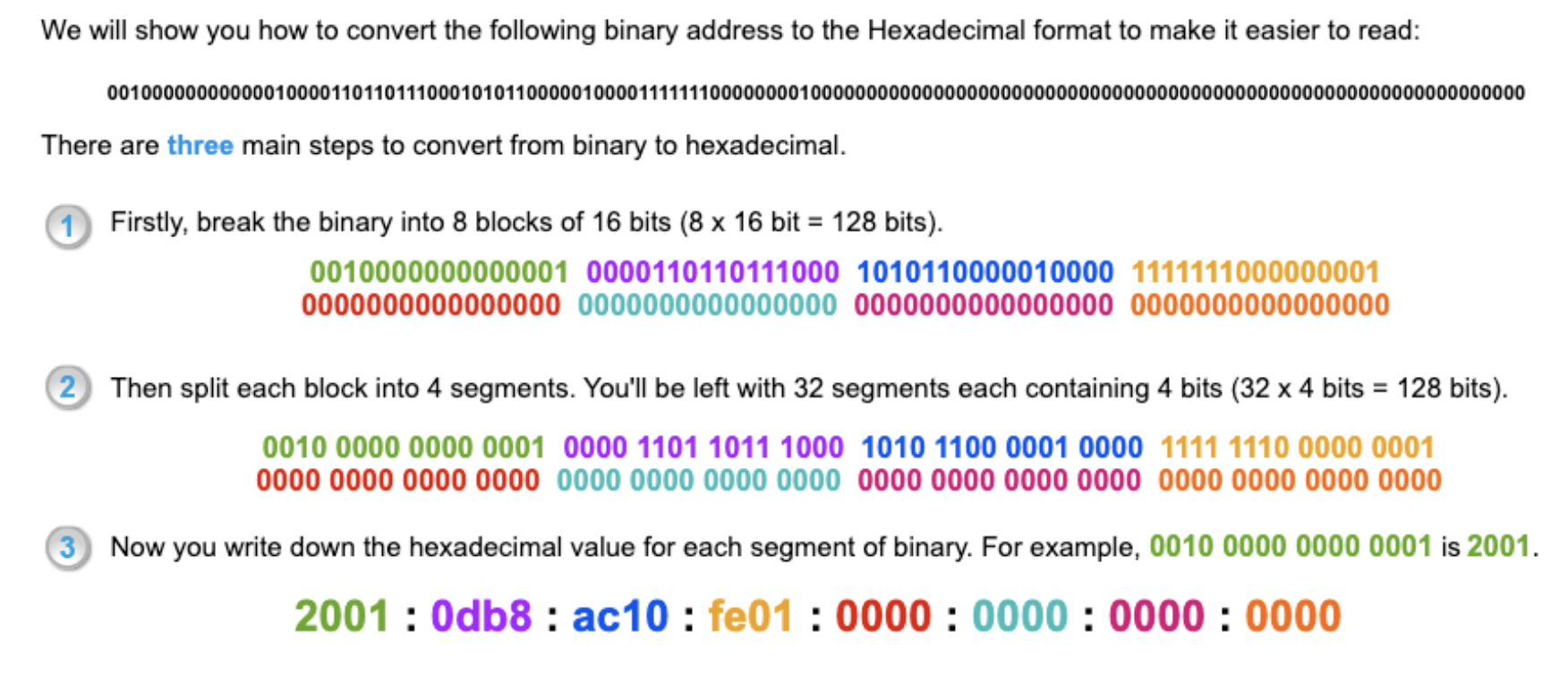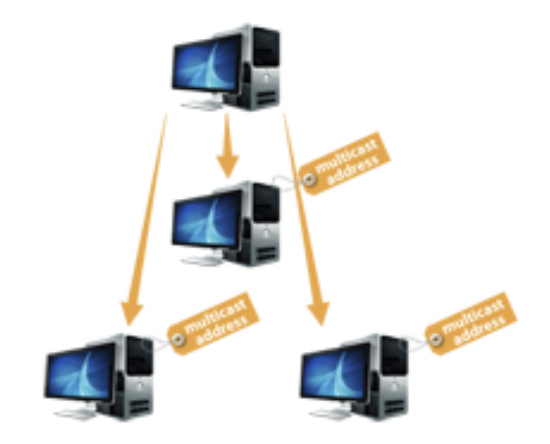Course: https://www.internetsociety.org/tutorials/introduction-to-ipv6/module-1-introduction/
Module 1: Introduction to iPv6
- IETF = Internet Engineering Task Force (IETF)
- Problems addressed when transitioning to iPv6:
- iPv4 address exhaustion
- need for simpler auto-configuration and re-numbering
- requirement for security at IP level
- improved protocol design
- new possibilities of managing flow
- iPv4 only has 2 billion IP addresses available, iPv6 encompasses 340 trillion trillion trillion
- Since iPv6 is a huge amount to address space, the subnet sizes are huge as well
- At ISP level (/32), there are 79 septillion addresses assigned
- Largest block of iPv6 addresses allocated to France Telecom and Deutsche Telekom > allocation is /19 block, equivalent to 35, 000 billion
- Most of the internet becoming dual stack because iPv4 and iPv6 are not compatible
- Difficulty and cost of obtaining iPv4 address space will increase, inevitable that in the future some sites will only support iPv6
- Workarounds: Network Address Translation
- Adopting MAT technology will help systems maintain iPv4 service while moving to iPv6 (bust costly in long-term)
- Steps to move to iPv6:
- Learn more about iPv6
- Get network iPv6 ready
Module 2: Understanding iPv6 Addresses
- iPv6 addresses are 128 bits
- broken into sixteen 8 bit sections
- example of address: 128.91.45.157.220.40.0.0.0.252.87.212.200.32.255
- can be converted to hex
- To convert iPv6 from binary address to hexadecimal:
- Break binary into 8 blocks of 16 bits
- Split each block of 16 bits into 4 segments
- Convert each segment into a hexadecimal (0-F)

- zero compression – consecutive blocks of zeros
- if there is more than 1 consecutive block where characters are all zeroes, you can compress to ::
- zero compression can only be used ONCE in an address
- zero suppression – leading 0’s
- remove all leading 0s (front part) in each segment (cannot remove if after a non-zero in a segment)
- each segment must contains at least a single digit if not using zero compression

- iPv6 prefixes
- iPv6 is hierarchical, addresses can be sub-netted for performance and security reasons in the same way as iPv4
- all devices whose IP addresses have the same prefix share the same network component of address and are part of a subnet
- larger subnet = smaller # after dash
- /32 subnet (means network is only 32 bits, whereas subnet contains up to 96 bits left for specific addresses)
- /48 subnet has 80 bits left for specific addresses
- /32 is a bigger subnet than /48
- iPv6 address types
- iPv6 addresses identify an interface/group of interfaces
- 3 main types of iPv6 addresses:
- Unicast (2000::)
- Most common type of iPv6
- Identifies a single interface
- Communication between single sender and single receiver over network
- Every machine should have at least open global unicast address assigned to each interface
- Global unicast addresses all begin with same prefix: 2000::/3
- Anycast
- Anycast addresses identify groups of interfaces
- Packets for anycast addresses are sent to nearest interface in a group
- Facilitates communication between any sender and nearest group of receivers in a network
- Allocated from unicast address space (2600::), not distinguishable from unicast address
- Multicast (ff00::)
- Identifies a group of interfaces, belonging to different nodes

- Packages sent to multicast addresses are delivered to all interfaces in the group
- Facilitate communication between single sender and multiple receivers
- Multicast replaces broadcast addresses in iPv4
- Prefix: ff00::/8
- Format:

- Indicator: Always 11111111 (aka FF), indicates multicast
- Scope: indicates how broadly multicast packets will spread
- 4 possible values:
- Node-local
- Link-local
- Site-local
- Global
- Group ID: multicast group within the given scope
- All nodes, all-routers, OSPF, NTP
- Special iPv6 Addresses
- Unspecified (::/128)
- All zeros, refers to host when host doesn’t know own address
- Used for devices seeking to have iPv6 address assigned
- Loopback (::1/128)
- Has single address for loopback function
- IPv4 Mapped (::ffff:0:0/96)
- Prefix is 96 bits, 32 bits hold the embedded iPv4 addresses
- Used to represent iPv4 address as an iPv6 address
- Address helps to transition from iPv4 to iPv6
- Unique Local Unicast (ULA) (fc00::/7)
- For local use, within a site or group of sites
- Not routable on the global internet
- Link-Local Unicast (fe80::/10)
- Unicast addresses to be used on a single link
- Used for neighbor discovery, automatic address configuration, when no routers are present
- Unspecified (::/128)
- 4 possible values:
- Identifies a group of interfaces, belonging to different nodes
- Unicast (2000::)

0 comments on “iPv6” Add yours →